Coffee bean variety Daquan | interpretation of Qianjie boutique coffee bean cooked bean label, coffee bean naming rules
Professional coffee knowledge exchange more coffee bean information please follow the coffee workshop (Wechat official account cafe_style)
Before you buy coffee beans, know the label of coffee beans.
Coffee beans themselves will have obvious regional characteristics, before buying, understand the flavor of coffee beans, coffee label is also like the red wine label, generally get a lot of information about coffee flavor from the label.
The common contents are as follows:
(1) Coffee varieties
(2) Coffee name
(3) Grade
(4) producing areas
(5) name of manor or processing plant
(6) name of country
(7) date of baking
(8) description of flavor, etc.
For example:
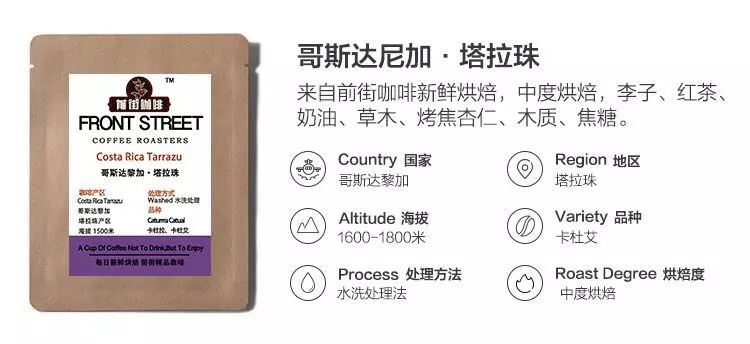
Country name-[Costa Rica] Costa Rica, [Panama] Panama; [Guatemala] Guatemala, [Rwanda] Rwanda, [Ethiopia] Ethiopia
Production area-[Tarrazu]: Tarazu is a coffee-producing area in Costa Rica, located in the volcanic belt of the low latitudes of Central America, with the highest average latitude and excellent climate and soil conditions, with an elevation of about 800 to 2000 meters above sea level in the central plateau and mountains.
Like [Yirgacheffe] Yegashefi (Ethiopian coffee region), [Antigua] Antigua (Guatemala coffee region), [Boquete] Boguit (Panamanian coffee region), [Nyeri] Neri (Kenya coffee region)
Qianjie new coffee cooked beans label hidden mystery, add [QR code] to learn about coffee beans specific producing area information, hand information, baking information.
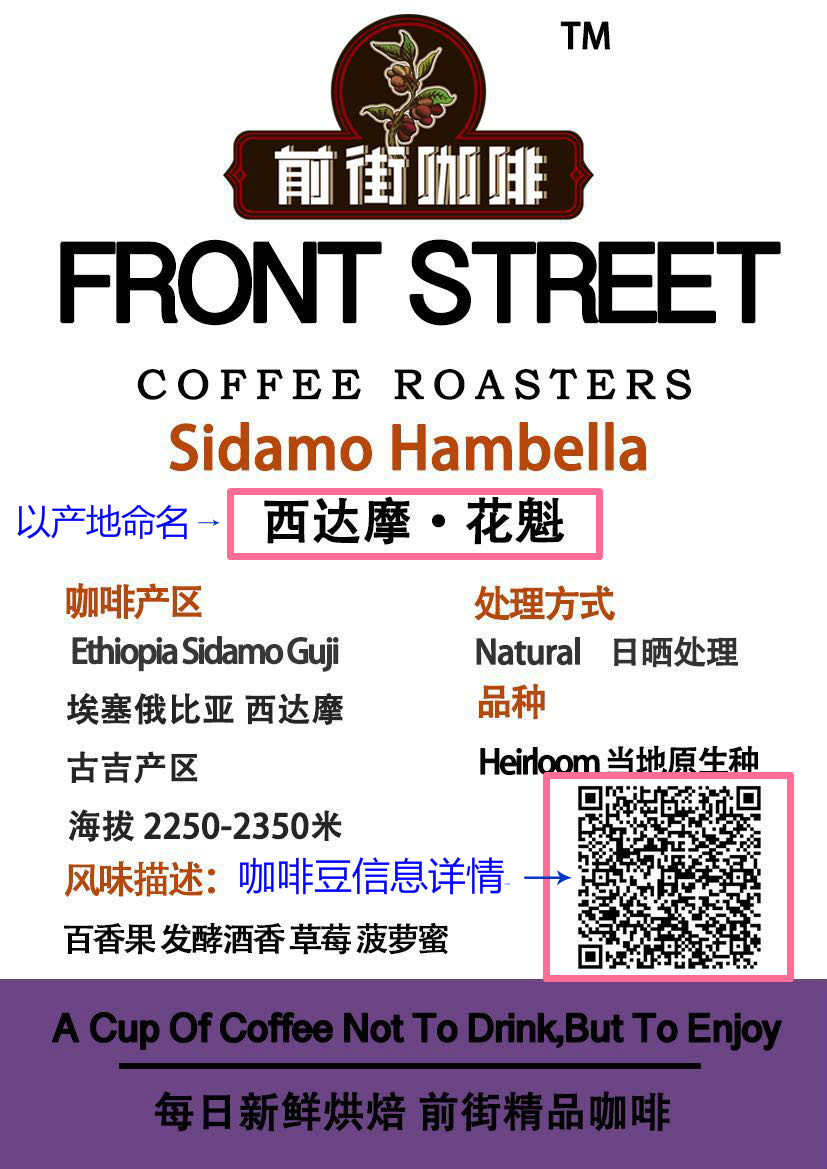
Generally speaking, coffee beans are named in the following ways:
Named after the country:
Colombia (Columbia), Guatemala (Guatemala), El Salvador (El Salvador), Bolivia (Bolivia), Nicaragua (Nicaragua)
Named after the producing area:
Yirgacheffe, a small town under Sidamo, is independent because of its unique flavor.
Ruoxia Village (Gesha Village)
Named after mountains:
Blue Mountain (Blue Mountain): Jamaica (Jamaica)
Kilimanjaro (Kilimanjaro): Tanzania (Tanzania)
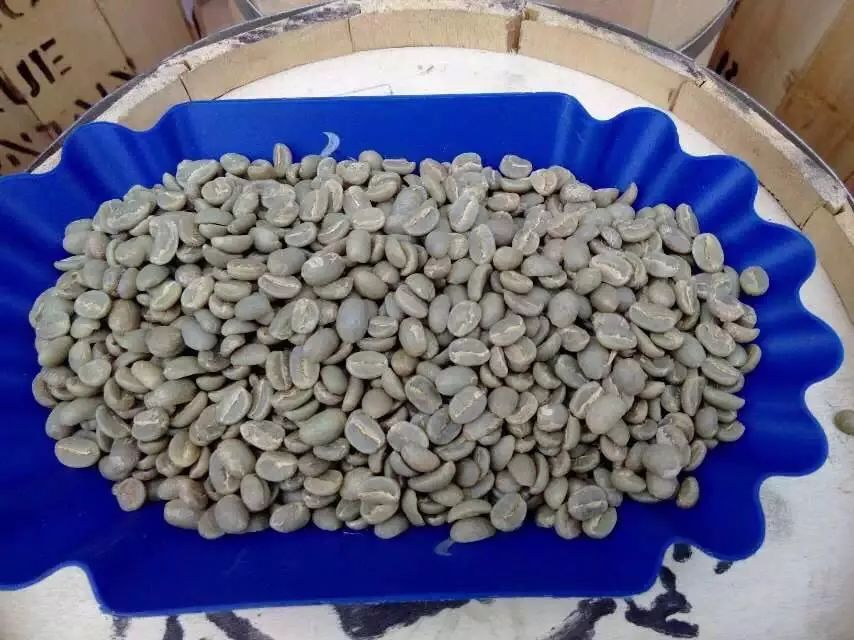
To name after a variety:
Mandheling: such as Gaiyou Manning (Gayo Mandheling), Lindong Manning (Lintong Mandheling) Glinchi Manning (Kerinci Seblat Mandheling)
Geisha: such as Panama Rose (Geisha Panama), Colombia Rose (Geisha Columbia), Guatemala Rose (Geisha Guatemala)
Named after the port of export:
Mocha: a port in Yemen
Santos: a port in Brazil (Brazil)
Malabar: Indian style-stained coffee, known as monsoon coffee beans, Malabar is a port in India
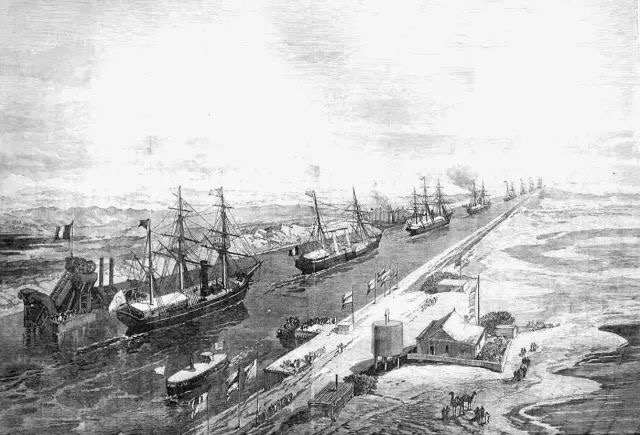
To name after a unique flavor or special treatment:
In the 90 + (Ninety Plus) company, 90 + beans are named in a completely different way from the usual boutique beans. There are no producing areas and manor names, and each bean is named according to its flavor. Candles, for example, mean "best approach" in the local dialect. Start with a concept of flavor, and then name it.
Collection | the most complete Ninety Plus 90 + details in history
Manor-some manor grade beans will mark the manor, such as "La" or "EL". "finca" is generally the name of the manor, such as [El injento]: Incht Manor, (Fazenda Rainha); Manor, Panamanian Emerald Manor (La Esmeralda Estate), Sweet Orange Manor (El Naranjo), Carnett Manor (Finca Canet).
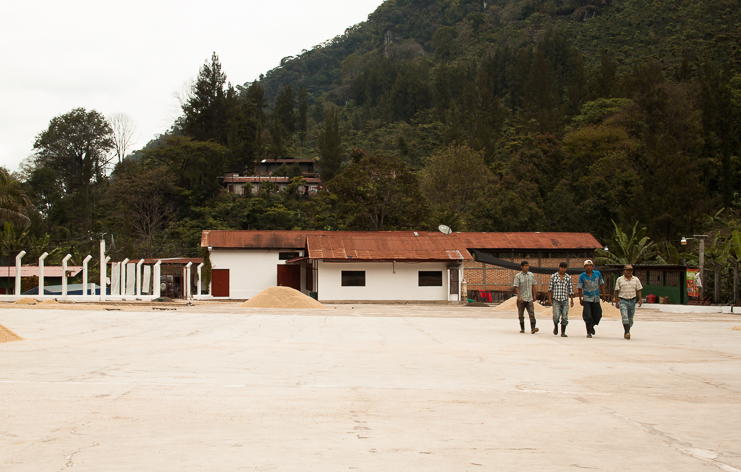
Treatment-solarization, washing, honey treatment, wet planing, half-sun, half-washing, etc.
(recommended reading: professional barista training | detailed description of coffee fruit processing, flavor characteristics and roasting changes)
[Honey Process]: honey treatment, honey treatment is the method of peeling off the pulp, retaining pectin and drying the fruit with endocarp. Honey-treated coffee has higher sweetness, higher sugar content and higher alcohol thickness than washed coffee.
[Natural]: it is the oldest and most primitive treatment of coffee beans. The harvested coffee cherries are placed on the terrace, and some are even directly exposed on the side of the road, receiving direct sunlight exposure (about 27-30 days). The moisture content is finished from 60% to only 12%. The characteristics of solarization method: the acidity is the lowest, the sweetness is obvious, the alcohol thickness is high, and the cleanliness is slightly lower.
[full Washed]: washing treatment, washing is to remove the peel, pulp, pectin, and then dry later; lead to a clean sink, soak in water for fermentation. Features: obvious acidity, good cleanliness, medium alcohol thickness, high stability. Semi-washed (semi-washed)
Also, the method of coffee treatment | Indonesian wet planing, peeling and tanning, honey treatment
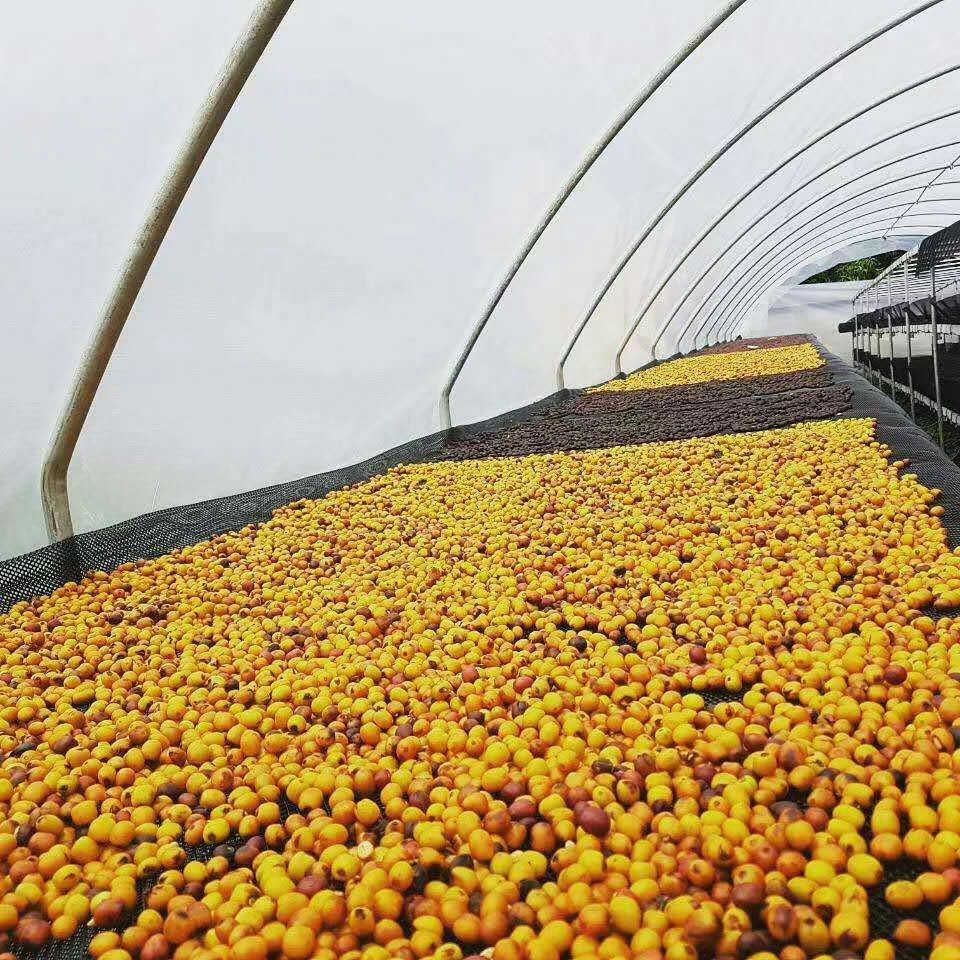
Varieties-such as Rosa Geisha, Bourbon Borubon, Kaddura Caturra, Kaduai Catuai are varieties of coffee beans. Coffee Variety Daquan | introduction of ancient coffee varieties, introduction of native and mutant species and special flavor
[Bourbon] bourbon coffee (French: Caf é Bourbon) is a kind of coffee produced by growing coffee trees in Arabica coffee bourbon cultivation. Bourbon coffee was originally grown in Reunion, also known as Le Bourbon Island before 1789, with strong chocolate and nutty aromas.
[Caturra]: Kaddura, a natural variety of Arabica variety bourbon
[Yellow Catuai] Huang Kaduai, a hybrid from Mundo Novo and Kaddura, was first bred by Brazil's [Contina Agricultural Research Institute] in 1949. Huang Kaduai has high disease resistance and is suitable for planting at high altitude. Both kinds of Kaduai have delicate and clean acid.
[Yellow borubon]: yellow bourbon is mutated by a cross between a bourbon with red fruit and a variety of iron pickup with yellow fruit called "Amerelo de Botocatu". The fruit is sweet and soft, with obvious nutty flavor, balanced and supple acidity, and clean.
[Pacamara]: a variety of Pacamara coffee, a hybrid of Pacas Pacas (a sudden variant of the bourbon species) and giant bean Maragogype (elephant bean) found in El Salvador in the 1950s.
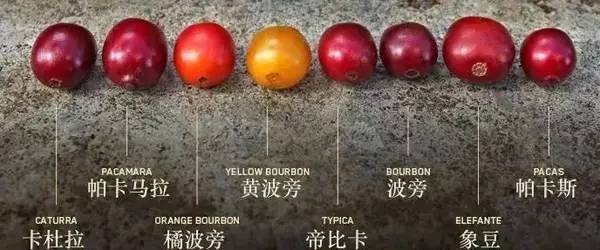
Grading-
[SHB]: very hard beans, Strictly Hard Bean (SHB), at 1600-1700 meters above sea level, coffee beans with high hardness at high altitude. The reason is that coffee beans have many nutrients, long fruit growth cycle, high density, high temperature resistance and roasting resistance; beans are hard.
[G1]: coffee beans like Indonesia are graded according to the proportion of defective beans. Indonesian beans are mainly divided into six grades, namely G1~G6. Ethiopia also uses this method, according to the defective bean grade of G1~G5, the defect rate of 2-3 defective beans per 300g is set as G1, and the highest grades of sun beans are G1 and G3.
[AA]: the origin of coffee beans is classified by the size of coffee beans. For example, Kenya is divided into nine grades, according to the bean type, there are PB (round beans), in addition, according to the size there are E (elephant beans), AA, AB, C, T, TT, MH, ML. Tanzania, Uganda and Yunnan are also classified according to AA.
[NY 2]: the Brazilian grading system, which scores the proportion, size, flavor and taste of defects, is its own independent grading system, which is more complex than that from other countries. For example, "Brasil Santos NY2 SC17/18 SS FC" [NY2] classifies the proportion of defects: the higher the number, the greater the proportion of defects. The order is 2, 2, 3, 3, 3, 4... NY says it is based on the New York rating standard. Coffee producing areas | Coffee grading system in Brazil and four common processing methods in Brazil
Special name-
[COE]: extraordinary Cup, Cup of Excellence,COE is held once a year, and the growers of boutique coffee submit their best coffee beans to the national or international censors of the association. After at least five reviews, the most advanced coffee beans will be awarded the title of COE. Cup test | how to perform cup test and score. Detailed scoring criteria for SCAA and COE cup test items
[Micro lot]: micro-batch coffee refers to coffee produced on a single farm and specially selected from all coffee crops with a better special flavor. The number of coffee beans that can be called micro-batch is very small. (from five to 100 bags, usually about 30 to 40 bags.) most of the micro-batches of coffee beans come from "top coffee students" selected by a single manor or cooperative.
[FNC]: Colombian Federation of Coffee producers, founded in 1927, is fully responsible for coffee-related matters, including coffee planting technology research, sales, marketing, quality standard construction, education and training for coffee farmers, etc.
[Cauca Best Cup]: the Coca Joyo Cup is jointly organized by well-known American traders, local exporters and the Colombian Coffee Association. The first Coca Zhuoyue Cup received about 200 samples in 2014, compared with more than twice the number in 2015. About 500 small farmers will compete for the competition, and the organizers will select the top 30 from more than 500 samples. The top 12 will be selected by the international jury cup, and raw bean sellers and bakers from all over the world will bid on the last day of the event.
[BOP]: Best of Panama Best Panama, Panamanian Raw Bean Competition 2018 Barnabas BOP | auction results are out! The new bid king breaks the historical record.
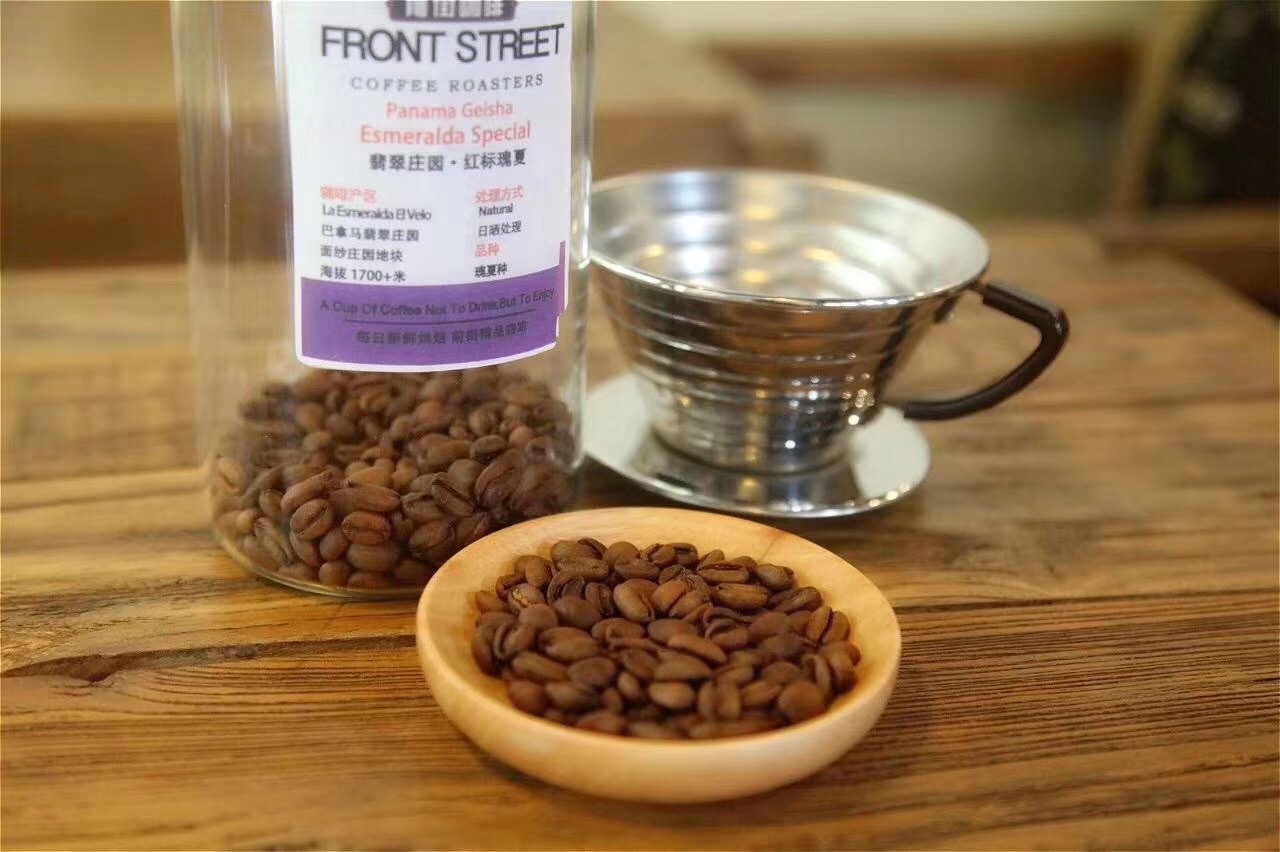
Flavor description-citrus, nutty, chocolate, etc.
Delicious beans can be obviously sweet, especially nuts, cocoa and honey, which are all common and popular flavors.
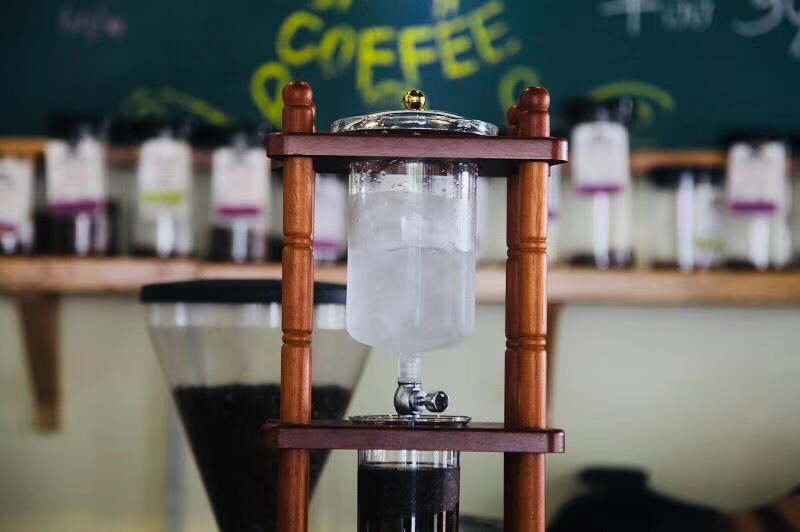
Important Notice :
前街咖啡 FrontStreet Coffee has moved to new addredd:
FrontStreet Coffee Address: 315,Donghua East Road,GuangZhou
Tel:020 38364473
- Prev
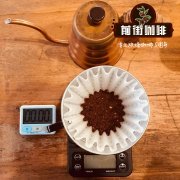
Hand brewed coffee tips---how to express coffee flavor yejia sherry orchard how to brew
Professional coffee knowledge exchange More coffee bean information Please pay attention to coffee workshop (Weixin Official Accounts cafe_style) Before the small editor and everyone discussed the so-called coffee out of different flavors is actually unrealistic, today small editor continue to discuss with you the extraction of various flavors in hand-brewed coffee, see how to use the method to systematically combine the coffee you want to present
- Next
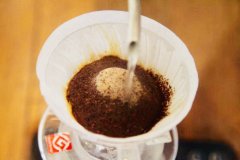
Flower butterfly, Huakui hand brewing coffee skills, hand water injection should use a large flow, or a small flow?
Some fans asked: do you want to use a big current or a small current to make coffee? If the water injection is divided into three stages: the first stage: water injection when steaming, water injection when draining air, and water injection when coffee powder is precipitated. The flow in these three stages is basically a little different. Take the water injection during steaming as an example: in order to keep the water around the coffee powder so that it can absorb water when steaming, it will be collected.
Related
- Beginners will see the "Coffee pull flower" guide!
- What is the difference between ice blog purified milk and ordinary milk coffee?
- Why is the Philippines the largest producer of crops in Liberia?
- For coffee extraction, should the fine powder be retained?
- How does extracted espresso fill pressed powder? How much strength does it take to press the powder?
- How to make jasmine cold extract coffee? Is the jasmine + latte good?
- Will this little toy really make the coffee taste better? How does Lily Drip affect coffee extraction?
- Will the action of slapping the filter cup also affect coffee extraction?
- What's the difference between powder-to-water ratio and powder-to-liquid ratio?
- What is the Ethiopian local species? What does it have to do with Heirloom native species?

